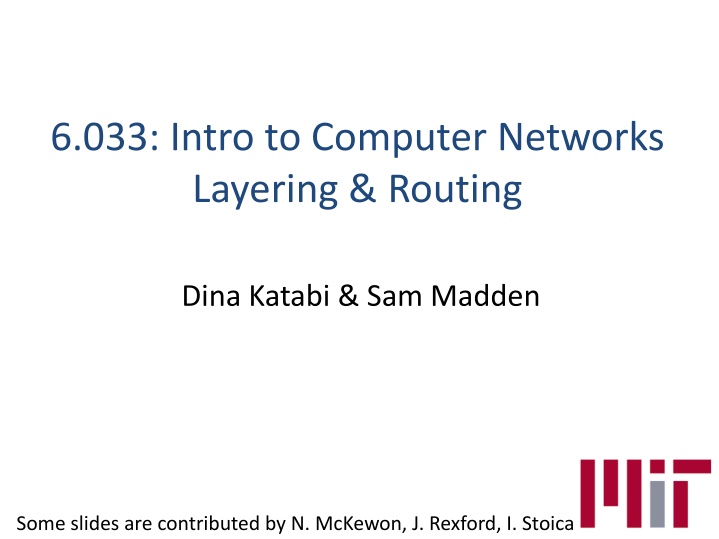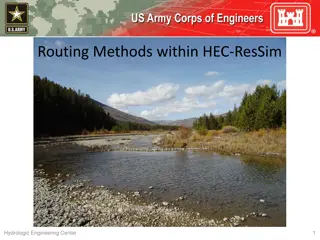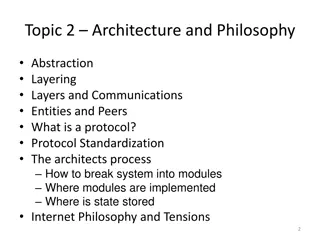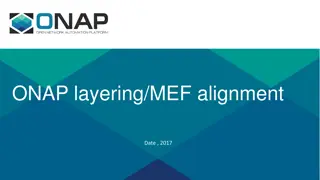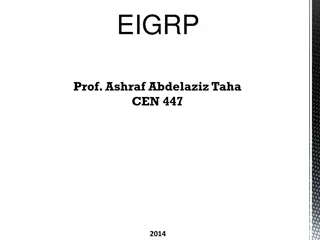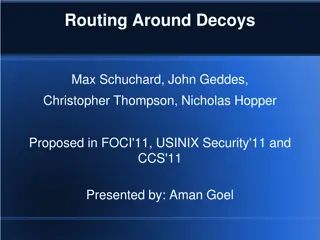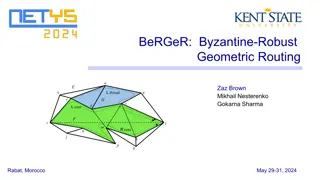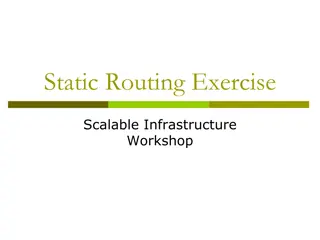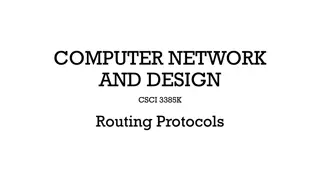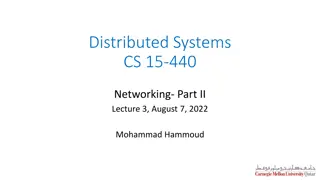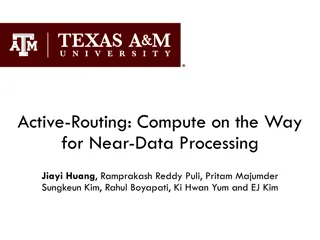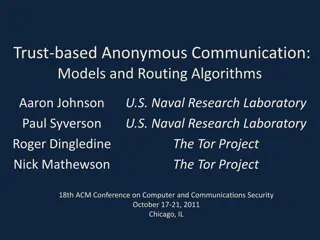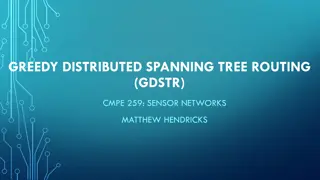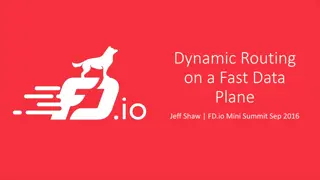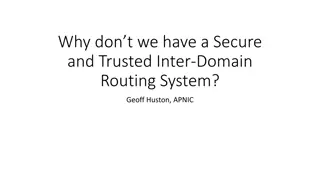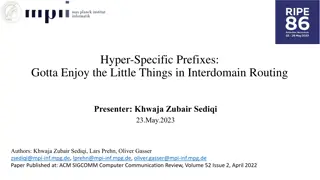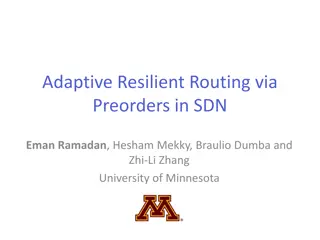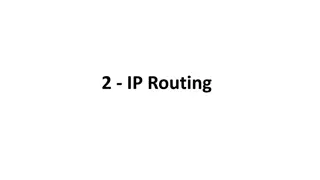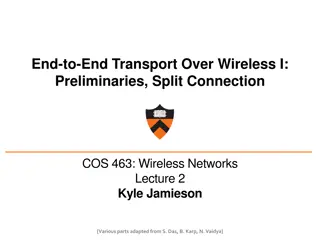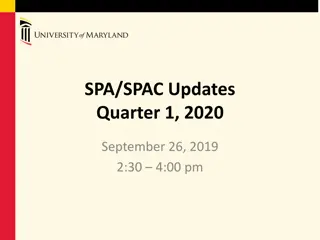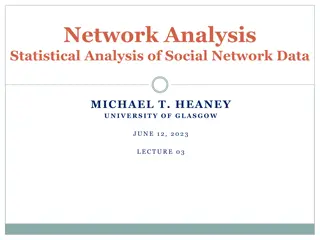Intro to Computer Networks: Layering & Routing Overview
Delve into the realm of computer networks with a comprehensive exploration of the layering and routing principles. Uncover the intricacies of Internet architecture, network neutrality, IP address exhaustion, cyber attacks, and the end-to-end principle. Discover the essence of Internet governance, traffic management, security concerns, and the ever-evolving landscape of global connectivity.
Download Presentation

Please find below an Image/Link to download the presentation.
The content on the website is provided AS IS for your information and personal use only. It may not be sold, licensed, or shared on other websites without obtaining consent from the author.If you encounter any issues during the download, it is possible that the publisher has removed the file from their server.
You are allowed to download the files provided on this website for personal or commercial use, subject to the condition that they are used lawfully. All files are the property of their respective owners.
The content on the website is provided AS IS for your information and personal use only. It may not be sold, licensed, or shared on other websites without obtaining consent from the author.
E N D
Presentation Transcript
6.033: Intro to Computer Networks Layering & Routing Dina Katabi & Sam Madden Some slides are contributed by N. McKewon, J. Rexford, I. Stoica
Two Billion Internet Users ~5 Billion Devices (PCs, laptops, smart phones, etc.) 3
Network Neutrality FCC Rules Against Comcast P2P Throttling The U.S. Federal Communications Commission has ordered Comcast to stop interfering with peer-to-peer traffic on its broadband network 8
IP Address Space Exhaustion Currently, the Internet is built using IPv4, but on February 3, 2011, the global supply of unassigned IPv4 Internet addresses was exhausted. On that date, the Internet Assigned Numbers Authority has distributed the final five blocks of approximately 16 million IPv4 addresses among the five Regional Internet Registries. 9
What is the Internet? 3 guiding principles! 11
Best-Effort Packet Delivery Service packets THE INTERNET 12
Power at the Edge End-to-End Principle Whenever possible, communications protocol operations should be defined to occur at the end- points of a communications system. Keeps the network simple and scalable Allows for easy introduction of new services at the edges
A Network of Networks 4 3 THE 5 INTERNET 2 6 7 1 Web server Client Browser 14
A Network of Networks 4 3 5 2 6 7 1 Web server Client Browser 15
How the Internet is Organizing? Layering 16
Layering Layering is a particular form of abstraction The system is broken into a vertical stack of functions/protocols The service provided by one layer is based solely on the service provided by layer below This is the up/down interface
Layering in the Internet End-to-End Layer Everything else! Reliability, integrity, packet ordering, congestion control, HTTP, FTP, SMTP, BitTorrent, Application Transport TCP, UDP Forwarding & routing Network IP Data Link Framing, coding, channel access Modulation/demodulation Ethernet, WiFi, Physical
Switch (Router) Host Host Application Transport Network Datalink Application Transport Network Datalink Network Datalink Physical medium Link and network layers are implemented everywhere The end-to-end layer (i.e., transport and application) is implemented only at hosts
An Example mypc.mit.edu web.mit.edu GET 6.033/index.html OK; file data Browser Server E-mail FTP File News Reliable data transfer TCP TCP SCTP UDP IP IP Wireless Ethernet Optical T3 IP IP IP Router Router Router
The Internet Hourglass Applications Web FTP Mail News Video Audio ping napster Transport protocols TCP SCTP UDP ICMP IP Ethernet 802.11 Power lines ATM Optical Satellite Bluetooth Link technologies Many applications, transports, and link protocols All use IP at the network layer: universal network layer
Network Layer Routing (figuring out the routes) & Forwarding (sending the packets) 22
How Does a Router Forwards the Packets? Destination of blue packets Router Destination of red packets Router Destination of green packets A router has input links and output links A router sends an input packet on the output link leading toward the packet s destination node A router does not care of who generated the packet
How does the router know which output link leads to a packet destination? Router to B A Forwarding Table Link 1, input Link 1, output Destination Out-link A out-link 1 B out-link 2 C out-link 3 D out-link 3 B Link 2, input Link 2, output C Router Link 3, input Link 3, output D Packet header has the destination Router looks up the destination in its table to find output link Table is built using a routing protocol
Basic Requirements of a Routing Protocol Finds a path from source to destination Optimizes some metric (delay, cost, etc.) Has no (permanent) loops
Distance Vector Routing Initialize Distance to self is zero and next hop is self Distance to anyone else is infinity Announce: Every T seconds Tell neighbors distances to all destinations Update route to dst. upon message from j Distance via j = j s distance + weight of link to j If distance via j is shorter than current distance, update routing table to go via j
Example Objective: Determine the route from (R1, , R7) to R8 that minimizes the distance 1 1 4 R1 R2 R4 R6 2 3 2 2 3 R7 2 R5 4 R3 R8 27
Solution is simple by inspection... (in this case) 1 1 4 R1 R2 R4 R6 3 2 2 2 R7 2 3 R5 4 R3 R8 The shortest paths from all sources to a destination (e.g., R8) is the spanning tree routed at that destination. 28
Distance Vector Routing Example 1 1 4 R1 R2 R4 R6 2 3 2 2 3 R7 2 R5 0 4 R3 R8 Initial State: All routers except R8 set their route length to . R8 sets its route length to 0. 29
Distance Vector Routing Example R1 Inf R2 Inf 2 1 1 4 R1 R3 4, R8 R2 R4 R6 R4 Inf 2 3 3 2 2 2 R5 2, R8 3 R7 4 2 R5 R6 2, R8 4 R3 R8 R7 3, R8 Every T seconds, Router i tells its neighbors about its current lowest-cost path to R8 Each router updates its distance as min(current distance, received distance + link weight) Note, routing tables have both the next-hop and the distance 30
Distance Vector Routing Example R1 6, R3 6 6 R2 4, R5 4 2 1 1 4 R1 R3 4, R8 R2 R4 R6 R4 6, R7 2 3 3 2 2 2 R5 2, R8 3 R7 4 2 R5 R6 2, R8 4 R3 R8 R7 3, R8 Repeat until no distance change 31
Distance Vector Routing Example R1 6, R3 6 6 R2 4, R5 4 2 1 1 4 R1 R3 4, R8 R2 R4 R6 R4 6, R7 2 3 3 2 2 2 R5 2, R8 3 R7 4 2 R5 R6 2, R8 4 R3 R8 R7 3, R8 Final Iteration R1 5, R2 5 5 R2 4, R5 4 2 1 R1 R3 4, R8 R2 R4 R6 R4 5, R2 2 3 2 2 2 R5 2, R8 3 R7 4 2 R5 R6 2, R8 4 R3 R8 R7 3, R8 32
Summary Internet architecture is based on layering E2E Layer Network Layer Link Layer Job of Network Layer is Routing & Forwarding Routers build routing tables using routing protocol Routers forward packets based on the packet s header and the routing table
